Does your home feel like a peaceful retreat, a place that gives you energy and helps you feel better? Or does it feel somehow wrong, causing stress you can't quite explain? For thousands of years, the ancient practice of Feng Shui has helped answer this question. Simply put, Feng Shui in house design means arranging your home to help positive energy flow better. The goal is to create a space that makes you feel good, brings peace, and helps you succeed in all parts of your life. This isn't about magic or superstition; it's about creating a strong connection between you and your living space. This guide gives you clear, step-by-step instructions to use these proven methods in your home, whether you're building new, fixing up what you have, or just making small changes to your current space.
Understanding the Basic Ideas

To use Feng Shui well, you need to understand its main concepts first. This knowledge explains the "why" behind the practice, helping you apply the ideas with purpose instead of just following a list of rules. By understanding these core ideas, you can use Feng Shui in any home and with any decorating style, creating a space that feels both peaceful and true to who you are.
The Life Force: Qi
Qi (pronounced "chee") is the invisible life energy that flows through all living things and the universe. In house design, we care about how Qi flows through our home. There are two main types. Sheng Qi is positive, life-giving energy. It moves gently, like a slow stream, bringing good things and opportunities. Sha Qi is the opposite—negative or harmful energy. It can be stuck, like muddy water, leading to tiredness and feeling trapped, or it can be aggressive, like rushing water, creating stress and worry. The goal of good Feng Shui is to encourage Sheng Qi while fixing or blocking Sha Qi.
The Bagua Energy Map
The Bagua is the energy map of your home. It's a grid that connects nine different areas of your physical space to matching areas of your life. By understanding this map, you can figure out which parts of your home might be affecting your money, health, relationships, or career. There are two main ways to use the Bagua: the traditional Compass method, which uses north, south, east, and west directions, and the Western/BTB method, which lines up the map with the front door of the home. For beginners, we suggest picking one method—usually the BTB method—and using it consistently.
To use the BTB Bagua, stand at your front door looking in and place this 3x3 grid over your home's floor plan.
| Back Left | Back Middle | Back Right |
|---|---|---|
| Wealth & Prosperity | Fame & Reputation | Love & Marriage |
| Middle Left | Center | Middle Right |
| Family & Elders | Health (Tai Chi) | Children & Creativity |
| Front Left | Front Middle | Front Right |
| Knowledge & Self-Cultivation | Career & Life Path | Helpful People & Travel |
The Five Elements
The Five Elements—Wood, Fire, Earth, Metal, and Water—are the building blocks of Qi. They represent different types of energy and are connected to specific colors, shapes, and materials. A balanced home has a good mix of all five elements. When one element is too strong or completely missing in a certain area, it can create problems. For example, a home office (Career area) with too much Fire (red colors, sharp shapes) might lead to burnout, while adding the Water element (black color, flowing shapes) can bring back flow and calm.
| Element | Colors | Shapes | Materials | Life Area/Quality |
|---|---|---|---|---|
| Wood | Green, Brown | Rectangular, Columnar | Wood, Plants, Textiles | Growth, Vitality, Family |
| Fire | Red, Orange, Purple | Triangular, Star, Pointy | Candles, Lighting, Animal Prints | Passion, Fame, Expansion |
| Earth | Yellow, Beige, Sandy | Square, Flat, Low | Ceramics, Stone, Earthenware | Stability, Grounding, Health |
| Metal | White, Gray, Metallics | Round, Oval, Arch | Metal, Rock, Stone | Clarity, Precision, Logic |
| Water | Black, Dark Blue | Wavy, Flowing, Asymmetrical | Glass, Mirrors, Fountains | Flow, Wisdom, Career |
The Big Picture Plan
Before you pick paint colors or furniture, the most important Feng Shui decisions happen when planning the overall layout of your house. The general layout and structure of your house create the foundation for its energy. Getting these big-picture placements right from the start is the most powerful use of feng shui in house design, especially for those building a new home or making major changes.
The Mouth of Qi
The front door is called the "Mouth of Qi" because it's the main entrance through which energy enters your home and life. It sets the mood for your entire property. A good front door is strong, welcoming, and easy to find.
* It should be clearly visible from the street, not hidden or blocked by overgrown plants or columns. This ensures opportunity can find you.
* It should open inward, inviting and pulling energy into the home rather than pushing it away.
* Its size should match the house—not so large it overwhelms the front of the house, nor so small it feels tight.
* Most importantly, avoid having the front door line up directly with a back door or large window. This creates a "pipeline" effect where Qi rushes in and straight out, taking opportunities and resources with it.
The Commanding Position
The Commanding Position is the most powerful and secure spot in any room. It is the location that is farthest from the door and diagonal to it, but not directly in line with it. From this spot, you should have a clear, unblocked view of the room's entrance. Both energetically and psychologically, this placement puts you in control of your space and your life. You can see what is coming your way and are not easily surprised. This principle is not just theory; it taps into our basic need for safety. It should be used for placing the most important items in your home: your bed (for good sleep), your desk (for career success), and your main sofa (for relaxation and control).
Mapping the Qi Path
Imagine Qi as a gentle river flowing from your front door. Its ideal path is one that winds gracefully throughout the entire home, touching every corner before leaving. This slow, curving flow nourishes the space. Common house features can disrupt this. Long, straight hallways create a form of Sha Qi, causing energy to rush too quickly and creating a feeling of unease. On the other hand, clutter and poorly placed furniture can block the flow entirely, leading to stagnation. The solution is to consciously guide the Qi. Use area rugs, strategically placed art, or a small entry table to intentionally slow the energy in a long hall. Make sure you have clear, curved pathways through rooms, allowing you to move with ease.
Strategic Key Areas
The placement of your home's most important zones has a big impact on the quality of life within them.
* The Kitchen: As the source of food, the kitchen is tied to health and wealth. It should not be the first thing you see when you walk through the front door, as this can lead to focusing too much on food or money worries. The stove, representing wealth and prosperity, should ideally be in a commanding position where the cook can see the kitchen entrance.
* Bedrooms: These are your safe spaces for rest and renewal. They should be located in the quieter, more "yin" parts of the house, typically towards the back, away from the street noise and activity of the main entrance.
* The Staircase: A staircase acts as a major energy pathway between floors. If a staircase directly faces the front door, Qi will rush up or down and out, making the home's energy unstable. If this layout can't be changed, this effect can be reduced by placing a physical barrier like a screen or a large, strong plant between the door and the stairs to slow and redirect the flow.
Room-by-Room Application
Once the overall layout is set, you can fine-tune the energy in each room. Using these principles will change how each space feels and works, making the concepts of feng shui in house design real and immediately helpful. Here is a practical guide for the key rooms in your home.
The Living Room
This is the social center of the home, where family connects and guests are welcomed. The energy here should be active, welcoming, and comfortable.
* Do's:
* Arrange seating in a way that encourages conversation. Sofas and chairs should be positioned to face each other, rather than all pointing at a television.
* Place the main sofa against a solid wall. This provides a sense of backing and support for those sitting on it.
* Use a mix of lighting, including general, task, and accent lighting, to allow the mood to be adjusted for different activities.
* Use a central coffee table or large rug to anchor the conversation area and create a focal point.
* Don'ts:
* Avoid a "waiting room" layout where all furniture is pushed up against the walls, which can create an empty space in the center and stop connection.
* Don't position a sofa with its back directly facing the main entrance to the room, as this can create a feeling of being unsafe.
The Bedroom Retreat
The bedroom's main purpose is rest, romance, and renewal. The energy here should be yin—soft, calm, and passive.
* Do's:
* Place your bed using the Commanding Position principle: against a solid wall, with a clear view of the door.
* Always use a solid, sturdy headboard. This provides important support and stability while you sleep.
* Keep the space under the bed completely clear to allow for the healthy circulation of Qi around your body as you rest.
* Choose soft, soothing colors inspired by skin tones, from pale white and beige to rich chocolate browns, to promote a restful atmosphere.
* Don'ts:
* Avoid placing the bed directly under a window, which lacks support, or a heavy overhead beam, which can create oppressive energy.
* Do not have mirrors facing the bed. Mirrors activate energy and can disrupt sleep by bouncing Qi around the room.
* Remove all electronics, work materials, and exercise equipment. These carry active, "yang" energy that works against rest.
The Nurturing Kitchen
The kitchen is a vital space that governs the health and wealth of the household. It should feel clean, bright, and abundant.
* Do's:
* Keep the kitchen very clean and free of clutter. A clean kitchen promotes good health.
* Make sure your stove is in perfect working order and use all the burners regularly. The stove represents your wealth and resources.
* Balance the Fire (stove, oven) and Water (sink, dishwasher) elements. Ideally, they should not be directly opposite or right next to each other to avoid a clash of energies.
* Don'ts:
* If possible, avoid having a kitchen located directly under an upstairs bathroom, as this can energetically "flush away" the health and wealth generated in the kitchen.
* Don't have a layout where the stove is directly visible from the front door, which can mean a loss of resources.
The Focused Home Office
Your home office is the command center for your career. The energy should support focus, creativity, and success.
* Do's:
* Position your desk in the Commanding Position. This is the single most important adjustment you can make for career success.
* Sit with a solid wall behind you for support. Avoid sitting with a window behind you, which can lead to a lack of backing in your career.
* Add elements that support your specific career goals. Add a healthy, upward-growing plant (Wood element) for growth or use metal elements for clarity and focus.
* Don'ts:
* Avoid facing a blank wall while you work, as this can symbolize obstacles and stop creativity. If unavoidable, hang an inspiring piece of art or a picture of an open landscape.

* Never sit with your back to the door. This puts you in a vulnerable position, unable to see opportunities (or challenges) as they arrive.
Advanced Concepts and Case Study
Beyond the basics of furniture placement, a deeper understanding of Feng Shui can solve complex issues in modern homes. Many popular architectural trends directly conflict with a harmonious flow of energy, but with expert insight, these can be corrected.
Modern Design Pitfalls
- The Open-Plan Problem: Large, undefined open-concept spaces are a hallmark of modern design. However, they can create chaotic, fast-moving energy and a lack of definition between life areas (e.g., work, rest, and family). The solution is not to build walls, but to create "energetic rooms within a room." Use large area rugs to anchor a seating area, position a console table behind a sofa to create a subtle boundary, and use large plants or screens to gently guide and slow the flow of Qi.
- The Overuse of Glass: Floor-to-ceiling windows and glass walls can be beautiful, but they can also create a deep sense of instability and exposure. Lacking solid walls equals a lack of support in Feng Shui. The solution is to create balance. Make sure there are enough solid walls to feel grounded. Use high-quality curtains or blinds that can be drawn to create a sense of containment and privacy, giving you control over the energy.
- The Minimalist Trap: While Feng Shui supports a clutter-free environment, extreme minimalism can create a sterile, lifeless space that is overly yin. A home needs a balance of both yin (quiet, passive) and yang (vibrant, active) energy. The solution is to intentionally add life. This can be done through a few carefully chosen, meaningful objects, pops of vibrant color in artwork or cushions, rich textures, and healthy green plants.
Case Study: THE QI FLOW
To show the transformative power of expert analysis, consider the case of "the Millers." They had just built their dream modern home—open, airy, and full of light—but they felt constantly on edge and drained. Their children were having trouble sleeping, and despite the open plan designed for togetherness, they felt disconnected.
Our team at THE QI FLOW was brought in to conduct an assessment based on our deep expertise in feng shui in house design. We quickly identified several critical issues:
1. The front door opened to a direct line of sight through the living room to a massive wall of windows at the back. This created a powerful energy drain, causing the "Wealth Qi" to rush straight through the house and out.
2. In the master bedroom, the bed was placed with the headboard against a large window, offering no solid support and leaving the couple feeling unsettled during sleep.
3. The vast open-plan living, dining, and kitchen area was one large, chaotic space. The energy from cooking, relaxing, and children playing all blended together, creating a stressful environment with no designated zone for rest.
The solutions we implemented were practical and tailored to the Millers' modern aesthetic:
* For the entryway, we placed a large, round table in the foyer with a beautiful living orchid on it. This immediately slowed the incoming Qi, encouraging it to circulate rather than rush out. We also hung a compelling piece of abstract art on a side wall to draw the eye and redirect the energy flow away from the direct path to the back.
* In the bedroom, we simply reoriented the bed to the commanding position against the opposite solid wall. We then framed the window, now to the side of the bed, with elegant, floor-to-ceiling drapes that could be drawn at night to create a cozy, secure feeling.
* To manage the open-plan area, we used a large, plush area rug to energetically define the living room zone. We then placed a sleek console table behind the main sofa. This created a "virtual wall," providing support for the sofa and a clear separation from the high-traffic path to the kitchen.
The results were dramatic. The Millers reported that within weeks, the entire feel of the house had shifted. It felt calmer, more grounded. Their children began sleeping soundly through the night, and the family found themselves naturally gathering and connecting in the newly defined living area. This case highlights how thoughtful feng shui in house design can solve real-world problems, turning a beautiful but stressful house into a truly supportive home. This practice's effectiveness is a key reason its principles have been studied and applied for over 3,000 years, a remarkable testament to its enduring value.
Blending with Modern Style
A common misconception is that applying Feng Shui will force you into a specific, often dated, Asian-inspired look. This is completely untrue. Feng Shui is not a decorating style; it is a set of principles about energy, flow, and balance that can be applied to any interior design style you love.
* For the Minimalist: Focus on the quality of light and air, the clarity of pathways, and the intentional placement of each object. Use the five elements subtly through materials—a sleek metal sculpture, a warm wooden bowl, a black slate coaster.
* For the Bohemian: This style naturally aligns with many Feng Shui principles. Embrace natural materials, an abundance of healthy plants (Wood element), rich textures, and the display of meaningful objects that bring you joy.
* For the Contemporary: Use bold color theory to intentionally balance the five elements. Position large-scale art to guide Qi through a room. Arrange clean-lined furniture in the commanding position to support both aesthetics and good energy.
Your Home, Your Sanctuary
Ultimately, feng shui in house design is a powerful and personal tool for creating a home that doesn't just shelter you, but actively supports your health, happiness, and goals. It's about cultivating a space where positive energy flows freely, where you feel balanced, and where you are in command of your life. It transforms your home from a passive collection of rooms into a dynamic partner in your well-being. You don't need to overhaul your entire house overnight. Start with one small, intentional change—clear the clutter from your entryway, move your desk into the commanding position, or buy a new plant—and begin to feel the profound shift for yourself.
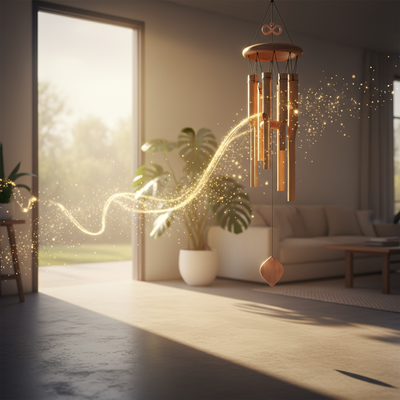
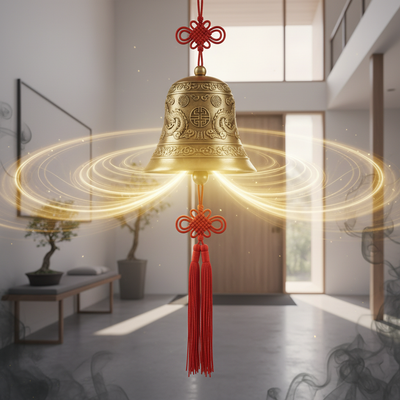

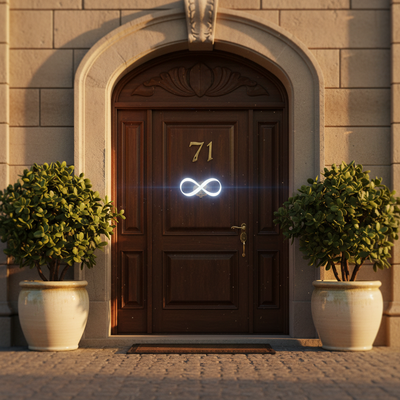
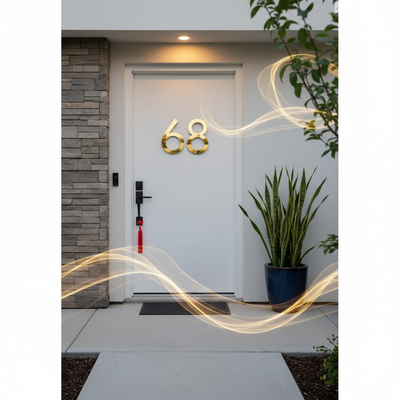
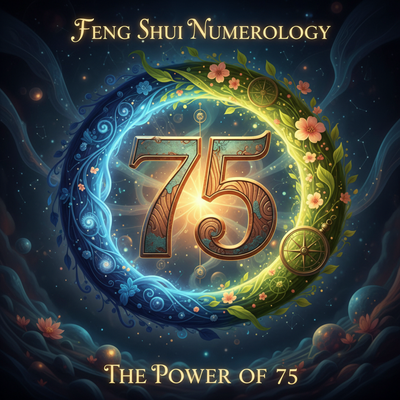
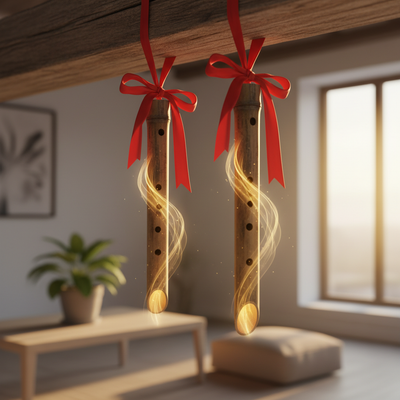
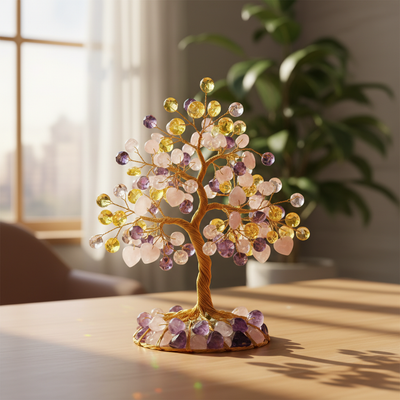
0 comments